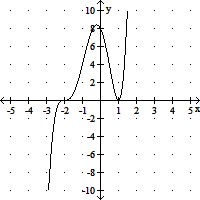Express the inverse of the given statement symbolically.Add 6 to x then multiply the result by -12.
A. - 
B.  - 6
- 6
C. 6(x - 12)
D. -12(x + 6)
Answer: B
You might also like to view...
Solve the problem.The delivery of a drug (such as an antibiotic) through an intravenous line may be modeled by the differential equation src="https://sciemce.com/media/4/ppg__tttt0613190828__f1q11g5.jpg" alt="" style="vertical-align: -4.0px;" /> are solutions increasing? decreasing? What is the equilibrium solution?
A. increasing for A < 40 and decreasing for A > 40; m(t) = 40
B. increasing for A > 40 and decreasing for A < 40; m(t) = 40
C. increasing for A < 40 and decreasing for A > 40; m(t) = 0
D. increasing for A > 40 and decreasing for A < 40; m(t) = 0
 where m(t) is the mass of the drug in the blood at time
where m(t) is the mass of the drug in the blood at time  k is a constant that describes the rate at which the drug is absorbed, and I is the infusion rate. Let
k is a constant that describes the rate at which the drug is absorbed, and I is the infusion rate. Let  and
and  For what initial values
For what initial values
Provide an appropriate response.Evaluate the expression: 
A. 
B. - 
C. - 
D. 
Find the slope of the line.9x - 6y = 7x + 5
A. - 
B. 3
C. 
D. 2
The graph of the polynomial f(x) is shown in the figure. Estimate the zeros and state whether their multiplicities are odd or even.
A. -2 (even), 1 (even) B. -2 (even), 1 (odd) C. -2 (odd), 1 (even) D. -2 (odd), 1 (odd)